Understanding age and society using natural populations
Scientific discussion meeting organised by Dr Josh Firth, Dr Greg Albery, Dr Sandra Bouwhuis, Dr Lauren Brent, and Dr Rob Salguero-Gomez.
Ageing affects almost all aspects of life, and population ageing is now recognised as an important process across diverse types of societies. This meeting explored how natural animal populations present a unique opportunity to address the lack of fundamental understanding surrounding how individual ageing influences society functioning, particularly through combining the field of animal ageing with animal social networks.
Recordings of the presentations will be available on this page once the meeting has taken place. Meeting papers will be published in a future issue of Philosophical Transactions of the Royal Society B.
Attending this event
This event has taken place.
Programme
To view the programme, please scroll down and select the day on the left-hand side. Click the arrows to view the speakers and talks.
Please contact the Scientific Programmes team for enquiries.
Image: Greg Albery. A social group of three red deer on Isle of Rum, Scotland.
Organisers
Schedule
Chair

Dr Josh Firth, University of Oxford, UK

Dr Josh Firth, University of Oxford, UK
Dr Josh Firth is a Research Fellow at Oxford University, primarily working on understanding how ecology and individual behaviour interact to shape social structure and the consequences of this for social processes (such as contagions) in societies. Dr Firth also enjoys collaborating across various topics in biology and beyond, such as using virtual systems to understand mechanisms within social networks, assessing how sociality relates to health in wild mammalian populations, developing models for examining the spread of behaviours, and working with biomedical researchers in implementing big datasets to allow new discoveries surrounding human health.
| 09:15-09:20 |
Welcome by the Royal Society
|
|---|---|
| 09:20-09:30 |
Introduction by the meeting organiser
Ageing affects almost all aspects of life and population ageing is now recognised as an important process across diverse types of societies. This meeting will explore how natural animal populations present a unique opportunity to address the lack of fundamental understanding surrounding how individual ageing influences society functioning, particularly through combining the field of animal ageing with animal social networks. 
Dr Josh Firth, University of Oxford, UK

Dr Josh Firth, University of Oxford, UKDr Josh Firth is a Research Fellow at Oxford University, primarily working on understanding how ecology and individual behaviour interact to shape social structure and the consequences of this for social processes (such as contagions) in societies. Dr Firth also enjoys collaborating across various topics in biology and beyond, such as using virtual systems to understand mechanisms within social networks, assessing how sociality relates to health in wild mammalian populations, developing models for examining the spread of behaviours, and working with biomedical researchers in implementing big datasets to allow new discoveries surrounding human health. |
| 09:30-10:00 |
Evolutionary ecology of ageing: How does sociality fit in?
Why does the ageing process vary so dramatically among individuals, populations and species in the natural world? This is a question evolutionary ecologists have increasingly grappled with over the last few decades, and we have made considerable progress. The author will outline recent work which addresses how genetics, environment and trade-offs shape variation in ageing in the wild, and discuss recent efforts to delve beyond demographic rates and understand the underlying changes in behaviour and physiology in later life in natural populations. There’s no doubt that social behaviour matters for our understanding of ageing in the wild, and the author will consider some of the key ways it might impact the expression of senescence as well as the evolution of ageing and lifespan. 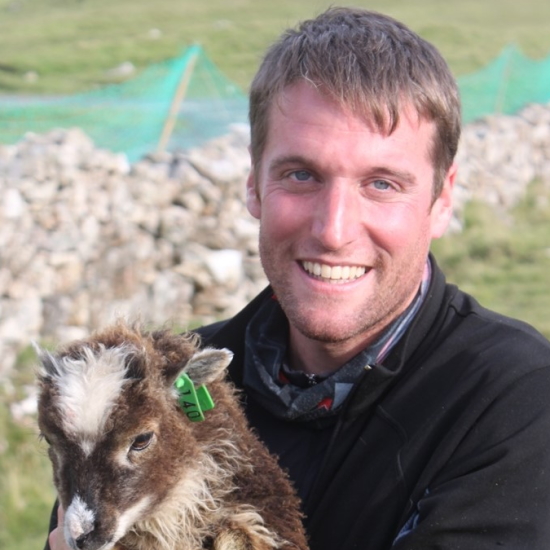
Professor Dan Nussey, Edinburgh University, UK

Professor Dan Nussey, Edinburgh University, UKDan Nussey is an evolutionary ecologist who researches the causes and consequences of individual variation in wild animal populations. His main research focus is ageing and his work using long-term field data has aimed to uncover the environmental and genetic drivers of variation in senescence under natural conditions. His main study system is a population of unmanaged Soay sheep on the remote St Kilda archipelago, which has been the focus on individual-based monitoring for almost 40 years. His recent work has provided insights into whether and how telomere shortening, habitat use and immune function change in later life and how this impacts fitness. |
| 10:00-10:10 |
Discussion
|
| 10:10-10:40 |
Building a holistic understanding of social aging
Social behaviour helps group-living organisms cope with socioenvironmental challenges and is central to their biological success. Social behaviour can change across the lifespan, which can modulate how fitness changes with age. Social behaviours can also impact the pace at which individuals are ageing and may be an important source of unexplained variation in individual patterns of senescence. Integrating social behaviour into ageing research requires a variety of study systems and approaches, including experimental manipulations, long-term observations, and cross-species comparisons. Animals that might be considered holistic models of social ageing exhibit age-based changes in social behaviour and have the capacity to support a wide range of approaches. Here, the author provides an overview of social ageing research in the rhesus macaques of Cayo Santiago island. The capacity to track individuals across their lifespan and to collect behavioural, molecular, physical, and physiological data, result in a relatively holistic system in which to understand the interplay between social processes, age, and ageing. Dr Brent focuses on efforts to quantify biological age in individual macaques, and presents results that suggest that higher ranking and/or socially integrated individuals appear biologically younger than their lower ranking and/or socially isolated counterparts. Dr Lauren Brent, University of Exeter, UK
Dr Lauren Brent, University of Exeter, UKLauren Brent is an Associate Professor of Ethology in the Centre for Research in Animal Behaviour at the University of Exeter. Her research asks why social relationships evolved and how they are maintained. Within groups, individuals differ in their tendencies to interact with others and in how deeply embedded they are in their social networks. Across group-living species, the patterning of social interactions and network structures vary. Investigating social variation within groups and across species allows us to determine the mechanisms that drive social relationships, establish their impact on individual health, ageing, life-history, and fitness, and to ultimately draw conclusions about their evolved function. Dr Brent has co-founded two initiatives aimed at open access, collaborative research: the Cayo Biobank Research Unit, and MacaqueNet, which are respectively supported by the National Institutes of Health and a European Research Council Consolidator Grant, FriendOrigins. |
| 10:40-10:50 |
Discussion
|
| 10:50-11:20 |
Break
|
| 11:20-11:50 |
Understanding the importance of age in demographic studies of density dependence
In age-structured populations, individuals may differ in their responses to changes in population size according to their age. Indeed, increasing competition among individuals does not impact all ages in the same way. Evidence for age-dependent responses to competition is accumulating in the literature in several taxa and has been explored since the late 70’s in demographic studies. Because the competitive ability of an individual can depend on its age, individuals may differ not only in their responses to density dependence but also in their contribution. However, demographic studies accounting for age-dependent effects of competition in natural populations remain scarce. This highlights the need to deepen our understanding of the role played by age in biotic interactions and their consequences on population dynamics. 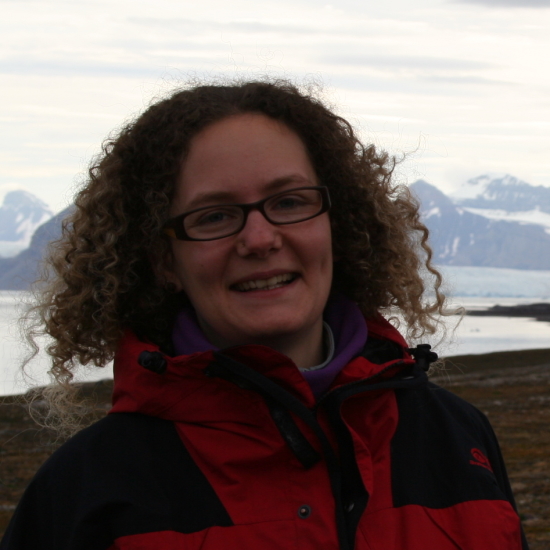
Dr Marlène Gamelon, CNRS Lyon & Norwegian University of Science and Technology

Dr Marlène Gamelon, CNRS Lyon & Norwegian University of Science and TechnologyMarlène is a researcher at the Centre National de la Recherche Scientifique (CNRS) in the Biometry and Evolutionary Biology Lab (LBBE) in Lyon, France and at the Centre for Biodiversity Dynamics at the University of Science and Technology (NTNU) in Trondheim, Norway. She is a population ecologist interested in understanding how free-ranging animal populations respond to environmental changes, including abiotic (climate conditions), anthropogenic (harvest), and biotic (intra- and interspecific interactions) factors. She uses modelling approaches to study how these factors shape phenotypic traits, demographic rates and population growth rate. Her research primarily relies on individual long-term monitoring of natural populations of birds and mammals, with implications in conservation and management. |
| 11:50-12:00 |
Discussion
|
Chair
Dr Lauren Brent, University of Exeter, UK
Dr Lauren Brent, University of Exeter, UK
Lauren Brent is an Associate Professor of Ethology in the Centre for Research in Animal Behaviour at the University of Exeter. Her research asks why social relationships evolved and how they are maintained. Within groups, individuals differ in their tendencies to interact with others and in how deeply embedded they are in their social networks. Across group-living species, the patterning of social interactions and network structures vary. Investigating social variation within groups and across species allows us to determine the mechanisms that drive social relationships, establish their impact on individual health, ageing, life-history, and fitness, and to ultimately draw conclusions about their evolved function. Dr Brent has co-founded two initiatives aimed at open access, collaborative research: the Cayo Biobank Research Unit, and MacaqueNet, which are respectively supported by the National Institutes of Health and a European Research Council Consolidator Grant, FriendOrigins.
| 13:30-14:00 |
Understanding human senescence via a comparative demographic lens
Increasing a year of health span in an average developed nation would currently cost its economy about a trillion pounds. Living long and prospering, in contrast, is something that many other non-human animals and plants seem to have achieved already. What lessons can we learn and apply to the lifespan trajectories and health spans of human societies? Here the author will present work linking both experimental work done in his lab with ageing interventions, as well as work linking the environmental and anatomic correlates of senescence across hundreds of animal and plant species. This talk will examine the role of modularity and society in ageing trajectories of humans and other creatures. 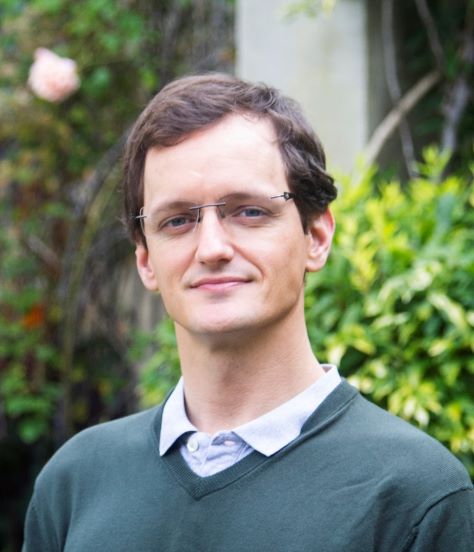
Professor Rob Salguero-Gomez, University of Oxford, UK

Professor Rob Salguero-Gomez, University of Oxford, UKRob is an Associate Professor in Ecology at Oxford. First trained as a plant population ecologist, and then having moved into the animal world, he now examines the mechanisms that structure variation in life history strategies (including the onset and pace of senescence) across the tree of life and the planet, as well as their consequences for the long-term viability of natural populations, including humans. Rob’s research group combines demographic, eco-physiological, and comparative approaches to examine these broad range of questions. He is a co-founder of the Oxford Ageing Research Collaborative Hub, and co-author of two books (eg The Evolution of Senescence across the Tree of Life, CUP; Demographic Methods across the Tree of Life, OUP), in addition to having published over 100 peer-review publications on ecology, evolution, and conservation biology. |
|---|---|
| 14:00-14:10 |
Discussion
|
| 14:10-14:40 |
Ageing and trans-generational effects: a round-up of results and riddles
Why age? This age-old question is fascinating and has received a lot of attention recently – in particular with respect to trans-generational effects, where non-genetic information gets passed onto future generations. For instance, in wild house sparrows, genetic, not foster, offspring from older parents have lower life-time fitness than their siblings that were born when the parents were younger. Here the author will present a round-up of results in wild and captive house sparrows (and maybe some chickens), that may help us better understand this phenomenon. 
Dr Julia Schroeder, Imperial College London, UK

Dr Julia Schroeder, Imperial College London, UKJulia is a Senior Lecturer in Ecology and Evolution at Imperial College London. Her research primarily focuses on the evolutionary basis of social traits. She did her PhD in Animal Ecology at the University of Groningen, The Netherlands, and later moved to Sheffield University where she put together the genetic pedigree of the house sparrows living on Lundy Island and continues working on this population to this day. She led a research group at the Max Planck Institute for Ornithology in Germany, where she set up a captive population of house sparrows, that she moved with her when she accepted the position of Lecturer at Imperial. |
| 14:40-14:50 |
Discussion
|
| 14:50-15:20 |
Break
|
| 15:20-15:50 |
Quantifying social transmission in natural populations using social network analysis
For individuals in many species, observing the behaviour of others is an efficient means of learning about their environment. Social learning is often adaptive yet demonstrating that individuals in natural populations rely on social learning is challenging. Social network analysis has aided such efforts by enabling predictions about the pathways by which information will spread through a population, given knowledge of individuals’ social connections. Network-based diffusion analysis (NBDA), in particular, has emerged as a powerful tool for inferring the importance of social pathways in directing information flow among individuals. Here, the author will illustrate the application of this technique by presenting a series of experimental studies on honeybee (Apis mellifera) foraging behavior. Honeybee colonies are microcosms of information-sharing, where coordinated foraging activity at the colony level is driven by multiple forms of interaction among workers (eg waggle dance communication, olfactory-based information transfer). Dr Hasenjager will show how NBDA helps to disentangle the effects of these different information sources on foragers’ behaviour and to compare their effects across different environments. He will end by highlighting potential applications of NBDA and other recent developments in network analysis (eg hypernetworks) for elucidating the interplay between age, social structure, and social transmission in animal populations. Authors: 
Dr Matthew Hasenjager, University of Tennessee, Knoxville, USA

Dr Matthew Hasenjager, University of Tennessee, Knoxville, USAMatthew Hasenjager is an Intelligence Community Postdoctoral Research Fellow at the University of Tennessee, Knoxville. He received his PhD from the University of Louisville in 2017 and was subsequently a postdoctoral researcher at Royal Holloway, University of London until 2021. His research focuses on the causes and consequences of variation in behaviour and social structure within animal groups. Using tools and concepts from network theory and the study of complex systems, he couples empirical and theoretical approaches to better understand the relationships between animal social structure and behavioural processes such as social learning, communication, and collective behaviour. He has worked on multiple systems, including honeybees and Trinidadian guppies. During his current fellowship, he is developing computational tools for analysing hypernetworks, a type of network able to explicitly encode polyadic interactions (eg eavesdropping, audience effects), and applying these tools to better understand transmission processes in animal groups. |
| 15:50-16:00 |
Discussion
|
| 16:00-16:30 |
Poster flash talk session
|
| 16:30-17:30 |
Poster session
|
Chair

Professor Rob Salguero-Gomez, University of Oxford, UK

Professor Rob Salguero-Gomez, University of Oxford, UK
Rob is an Associate Professor in Ecology at Oxford. First trained as a plant population ecologist, and then having moved into the animal world, he now examines the mechanisms that structure variation in life history strategies (including the onset and pace of senescence) across the tree of life and the planet, as well as their consequences for the long-term viability of natural populations, including humans. Rob’s research group combines demographic, eco-physiological, and comparative approaches to examine these broad range of questions. He is a co-founder of the Oxford Ageing Research Collaborative Hub, and co-author of two books (eg The Evolution of Senescence across the Tree of Life, CUP; Demographic Methods across the Tree of Life, OUP), in addition to having published over 100 peer-review publications on ecology, evolution, and conservation biology.
| 09:30-10:00 |
From interactions to relationships to social structure: Understanding how ageing shapes the social landscape
Age-related declines in phenotypic traits are widely documented in natural populations, but less is known about how social behaviour changes across the lifespan. Given that social relationships are central to the biological fitness of many group-living animals, understanding why ‘social ageing’ occurs and what the associated consequences are is important for integrating sociality into our broader understanding of the ageing process. Here, Dr Siracusa explores within-individual age-based changes in sociality using eight years of behavioural data from a population of free ranging rhesus macaques (Macaca mulatta) on the island of Cayo Santiago. In this talk she will discuss how social interactions and social relationships change with age in female macaques and will provide evidence that age-based reductions in sociality may not simply be the consequence of senescent declines but might be a proactive response to the physiological and energetic constraints that come with age. She will then discuss how these age-based changes in social behaviour can feed up to influence an individual’s indirect connectedness in their network and overall patterns of network structure. Overall, Dr Siracusa will show that age has the potential to play an important and underappreciated role in the structure and function of animal societies, which warrants further research. 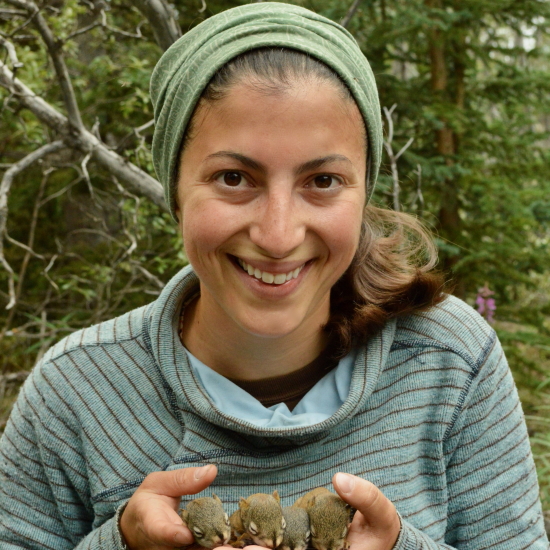
Dr Erin Siracusa, University of Exeter, UK

Dr Erin Siracusa, University of Exeter, UKDr Erin Siracusa is a Postdoctoral Research Fellow in the Centre for Research in Animal Behaviour at the University of Exeter. She is a behavioural ecologist broadly interested in the evolution of sociality. Her research is focused on free-living populations of mammals and uses a combination of long-term data analysis, behavioural observations, and field experiments to investigate the effects of social interactions on individual health, behaviour, fitness, and senescence. She obtained her PhD from the University of Guelph in Canada where she worked on the Kluane Red Squirrel Project and explored the importance of the social environment in a ‘solitary’ species. Her current research uses a long-term study of rhesus macaques on Cayo Santiago to examine interactions between sociality and ageing, exploring how and why social behaviour changes across the lifespan and the consequences for other traits. |
|---|---|
| 10:00-10:10 |
Discussion
|
| 10:10-10:40 |
Social effects on ageing in "non-social" animals
That social environments can influence ageing is perhaps intuitive in animals with complex societies such as group living mammals, birds or eusocial insects. For example, we might easily predict that an obligate colony-living ant might find social isolation highly stressful, resulting in shortened lifespan. However, it is becoming increasingly apparent that social effects on ageing patterns are seen in animals not classically considered “social”. Drosophila melanogaster fruit flies, a major model in understanding the genetic drivers of ageing, are one such animal. There is growing evidence that fruit flies are highly sensitive to their social environments, including in terms of ageing. In D. melanogaster, patterns of both lifespan and senescence of various traits respond to different types of social contact. In common with other animals including humans, fruit flies show sex differences in response to the same type of social contact. Moreover, being such a tractable model enables us to take a mechanistic approach, to begin to understand how social information is integrated at a molecular level. In this way, work in fruit flies complements evidence from animals more easily studied in the wild, and might lead us to reassess what we regard as a “social animal”. 
Professor Amanda Bretman, University of Leeds, UK

Professor Amanda Bretman, University of Leeds, UKAmanda Bretman is Professor of Behavioural Ecology at the University of Leeds. She started her research career with her PhD at Leeds, followed by post-doctoral positions at the University of Exeter and University of East Anglia. She returned to Leeds in 2013 and now combines research with a university leadership role as Dean of Research Quality. Her work focusses on the evolution of social and sexual behaviours, largely using insect models. Using fruit flies enables her to take a mechanistic approach to understanding the effects of the social environment. With an international network of colleagues, she is also pioneering work on the impacts of climate change on fertility. |
| 10:40-10:50 |
Discussion
|
| 10:50-11:10 |
Break
|
| 11:10-11:40 |
Linking age-structure and social behaviour in natural populations: case study using long-term data on a wild breeding bird population
Changes in social behaviour with age are almost ubiquitous; consequently, variation in population age-structure will determine the overall social organisation of groups, and how social processes operate within them. Here, the authors first assess previous research into age-related effects on social processes with the aim to better understand how a population’s age-structure might influence its social functioning. They propose the potential of using data from natural populations in concert with a social network approach to uncover the causes and consequences of this relationship. Secondly, the authors present ongoing work in a model system of investigating age-structure and sociality: a long-term study of wild great tits (Parus major). They demonstrate how population-level breeding behaviour is mediated by fluctuations in age-structure, as variation in age-assortative pairing is driven by the proportion of juveniles in the population. The authors also present initial findings evaluating spatio-temporal variation in age-structure and how this relates to the formation of territories and emerging neighbourhoods that are assorted by age. Understanding the consequences of age-structure is important as anthropogenic-driven changes may lead to demographic shifts in natural populations. Thus, advancing our knowledge of age-structure will deepen our understanding of how societies age and the potential social implications across systems. 
Mr Joe Woodman, Edward Grey Institute of Field Ornithology, University of Oxford, UK

Mr Joe Woodman, Edward Grey Institute of Field Ornithology, University of Oxford, UKJoe Woodman is a PhD candidate at Oxford University conducting research aimed at understanding the causes and consequences of spatio-temporal variation in age-structure within natural populations. Specifically, Joe’s studies have focused on researching how fluctuations in population age-structure affect the breeding behaviour of species with differing life-history characteristics, and how variation in age-structure develops over different spatial scales, and the consequences of this on the ecological and social functioning of populations. |
| 11:40-11:50 |
Discussion
|
| 11:50-12:20 |
Age-specific plasticity in laying date in response to breeding density in a long-lived seabird
Longitudinal studies of various vertebrate populations increasingly provide evidence for age-specificity of phenotypic traits, with initial improvements in early life usually being followed by senescent declines late in life. Studies of social influences on phenotypic traits are similarly abundant and for example provide evidence for effects of partners, helpers, neighbour familiarity or density on a multitude of phenotypic traits. Interactions between effects of ageing and the social environment, however, have received less empirical attention. In this talk, the authors therefore ask whether individuals show changes in plasticity in response to density as they grow older, and test whether the answer to this question depends on the level at which density is assessed. Hereto, the authors use data obtained from a long-term longitudinal study on a long-lived seabird, the common tern Sterna hirundo, and use laying date, an important determinant of fitness, as our phenotypic trait of interest. Maria Moiron and Sandra Bouwhuis Institute of Avian Research, Wilhelmshaven, Germany 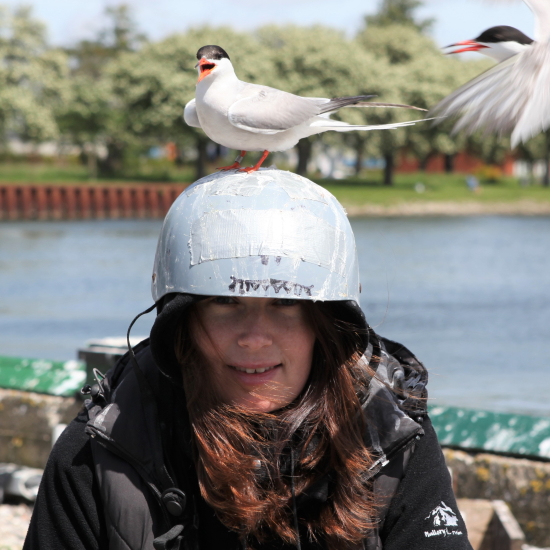
Dr Sandra Bouwhuis, Institute of Avian Research, Germany

Dr Sandra Bouwhuis, Institute of Avian Research, GermanySandra Bouwhuis is the scientific director of the Institute of Avian Research in Wilhelmshaven (Germany), and an evolutionary ecologist with a broad interest in the causes and consequences of within-individual change in life-history traits and between-individual variation in life-history strategies. She maintains a long-term individual-based study on common terns (Sterna hirundo), and focusses on topics such as ageing, parental effects, migratory behaviour, responses to climate change, within- and transgenerational effects of environmental mercury pollution and avian influenza. |
| 12:20-12:30 |
Discussion
|
Chair

Dr Sandra Bouwhuis, Institute of Avian Research, Germany

Dr Sandra Bouwhuis, Institute of Avian Research, Germany
Sandra Bouwhuis is the scientific director of the Institute of Avian Research in Wilhelmshaven (Germany), and an evolutionary ecologist with a broad interest in the causes and consequences of within-individual change in life-history traits and between-individual variation in life-history strategies. She maintains a long-term individual-based study on common terns (Sterna hirundo), and focusses on topics such as ageing, parental effects, migratory behaviour, responses to climate change, within- and transgenerational effects of environmental mercury pollution and avian influenza.
| 13:30-14:00 |
Energetics of social ageing
In group living animals, social integration is crucial for health and wellbeing. Age-based differences in sociality have been documented in several mammalian systems; however, the potential drivers of social ageing are still poorly understood. Age-related declines in energy regulation may limit individuals’ movement and therefore their ability to socially interact or the likelihood of others coming into social contact, leading to reductions in the quality and quantity of social relationships. Empirical tests of these predictions are lacking, due to methodological limitations. Dr Fürtbauer will present ongoing work on wild chacma baboons (Papio ursinus) combining non-invasive endocrine proxies of energy balance and metabolic rate with measures of physical activity, movement, and sociality derived from high-resolution GPS and tri-axial acceleration data. 
Dr Ines Fürtbauer, Swansea University, UK

Dr Ines Fürtbauer, Swansea University, UKDr Ines Fürtbauer is an Associate Professor in Biosciences at Swansea University. Her research is in the field of behavioural ecology and endocrinology and focuses on understanding the causes and consequences as well as the adaptive value of variation in behaviour with a strong emphasis on hormonal actions and mechanisms. Her lab uses a wide range of state-of-the-art, non-invasive hormone analysis techniques in several organisms and taxa. Dr Fürtbauer aims to stretch the limits of behavioural endocrinology to not only address fundamental and outstanding questions in the field but also tackle important and pressing issues in animal welfare, management, and conservation. |
|---|---|
| 14:00-14:10 |
Discussion
|
| 14:10-14:40 |
Social interactions and group cohesion in long-lived rational agents
Social interactions are a behavioural trait that is subject to natural selection, and thus the nature of these interactions can be understood as an adaptive response to the problems animals face. Attempts to ground social interactions from theoretical foundations have focused on the fitness consequences for individuals applying different interaction rules, while typically taking group membership as a given. This ignores how the decisions individuals make shape which groups they subsequently find themselves in, and thus the role that group maintenance may play in those decisions. In this talk the author will describe a theory of social decision making in which agents rationally seek to maximise their long-term payoffs, by balancing immediate rewards and the long-term benefits of remaining in a cohesive group. By varying the effective time horizon of the agents, we can generate different solutions to this trade-off, explore the social consequences of an increasing long-lived population and likely changes in social behaviour as individuals age. Dr Richard Mann, Leeds University, UK
Dr Richard Mann, Leeds University, UKRichard Mann is an Associate Professor of Statistics in the School of Mathematics at the University of Leeds, and a UK Research and Innovation Future Leaders Fellow. His research focuses on collective behaviour in humans and animals, and in particular the adaptive function of social interactions and social learning, including the role of incentives in optimising collective behaviour. He also studies statistical models of macroevolution and the effect of selection biases in palaeobiology. |
| 14:40-14:50 |
Discussion
|
| 14:50-15:20 |
Break
|
| 15:20-15:50 |
Incorporating social ageing into eco-evolutionary models of host-pathogen systems
Ageing is a near-ubiquitous process across the animal kingdom that presents a mounting problem for human health. As animals age (ie “senesce”), they generally experience substantial age-related declines in a variety of immune traits (“immunosenescence”). Because one of the immune system’s main roles is to defend against pathogens, these age-related changes in immunity may have important ramifications for infection status. However, despite these well-appreciated impacts of age on immunity, we have a much shallower appreciation of age-related changes in behaviour, their effects on exposure to pathogens, and the implications for infection. As such, we have a relatively weak understanding of behaviour’s role in influencing the burden of infection in the elderly, both in humans and in wild animals. Building on a recent surge of interest in behavioural declines over the lifespan (“social ageing”), Gregory Albery will outline how within-individual changes in behaviour and immunity can interact with and counteract one another, and their emergent impacts for population-level social network structure, infection dynamics, and (therefore) host-pathogen coevolution. Using wild systems of long-lived mammals as case studies, the author will outline empirical examples of interactions between ageing, behaviour, immunity, and infection, as well as providing evidence for time-staggered interactions between early life infections with certain parasites, late life infections with different parasites, and their emergent impacts on fitness. Finally, he will describe a framework for using individual-level ageing trajectories and emergent generative social network models to interrogate and decipher these trends. Ultimately, the combined evidence may allow us to examine how age structuring and adaptive changes in behaviour and immunity can contribute to populations’ resilience to epidemics of novel pathogens, particularly with regards to respiratory pathogens exhibiting highly age-skewed morbidity and mortality. 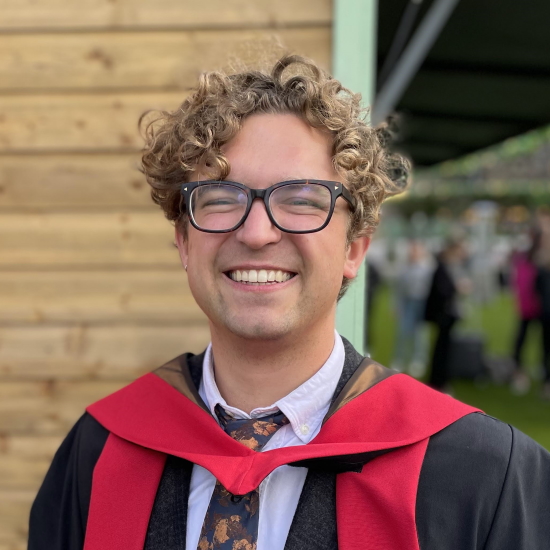
Dr Gregory Albery, Georgetown University, USA, and University of Edinburgh, UK

Dr Gregory Albery, Georgetown University, USA, and University of Edinburgh, UKGregory Albery is a disease ecologist working at the intersection of animal behaviour, evolutionary ecology, and global change biology. He specialises in spatial and social network analyses of individual-level wildlife systems, and is increasingly applying this expertise to broad, cross-system macroecological datasets. The research consortium that he co-founded, Verena, is focused on connecting fundamental mechanisms of the host-virus network with global processes and pandemic risk, and was recently awarded an NSF Biology Integration Institute grant to establish a centre at Georgetown University. One arm of his research involves investigating the mechanisms underpinning age-related changes in social behaviour and infection, for which he is using the Isle of Rum red deer as a case study. In the future, he is hoping to expand this project across a wider range of animal systems to inform a generalisable framework for ageing’s effects on infectious disease. |
| 15:50-16:00 |
Discussion
|
| 16:00-16:30 |
Panel discussion/overview
|
